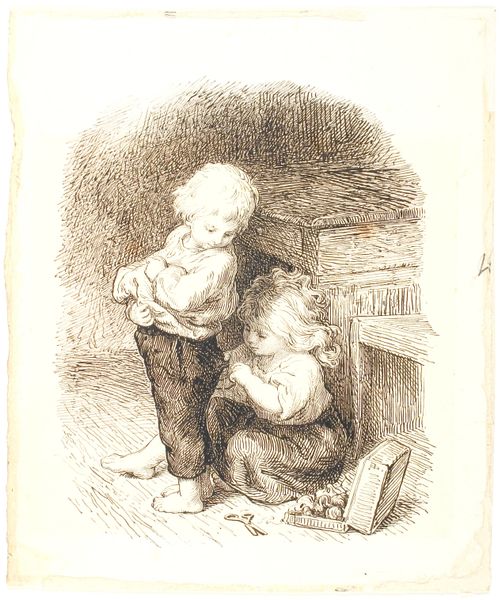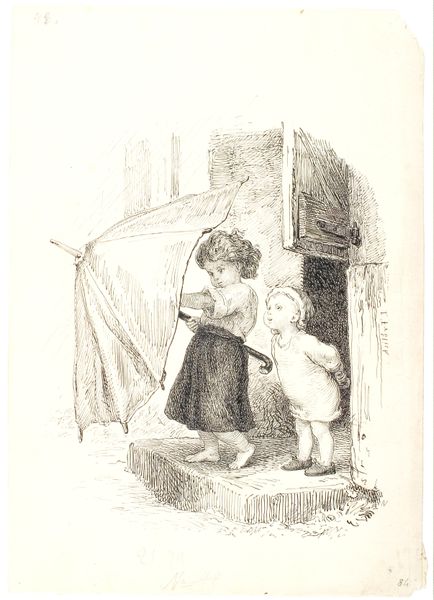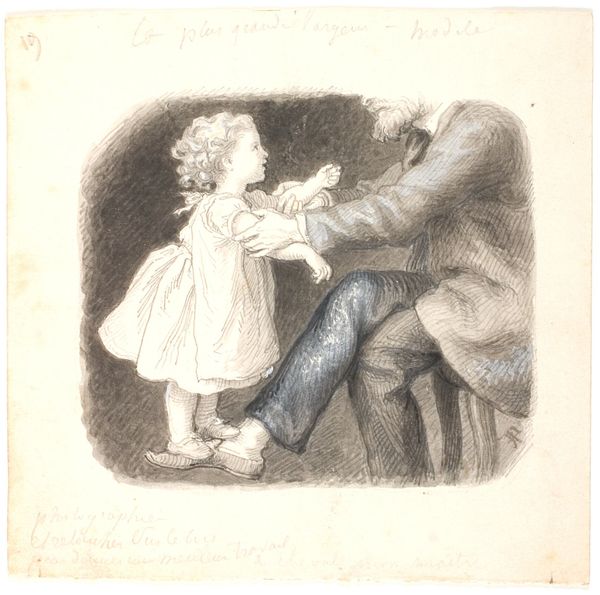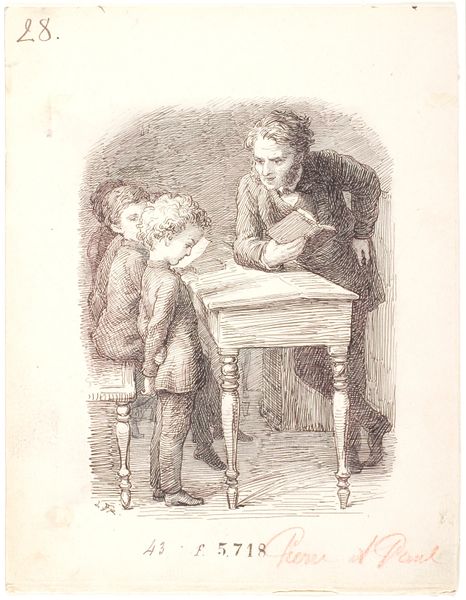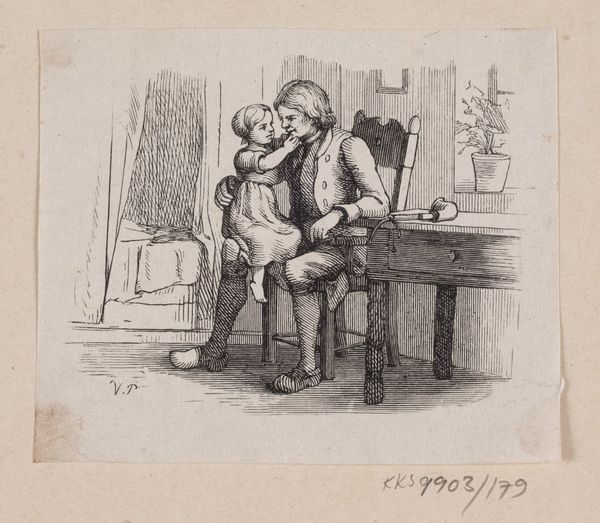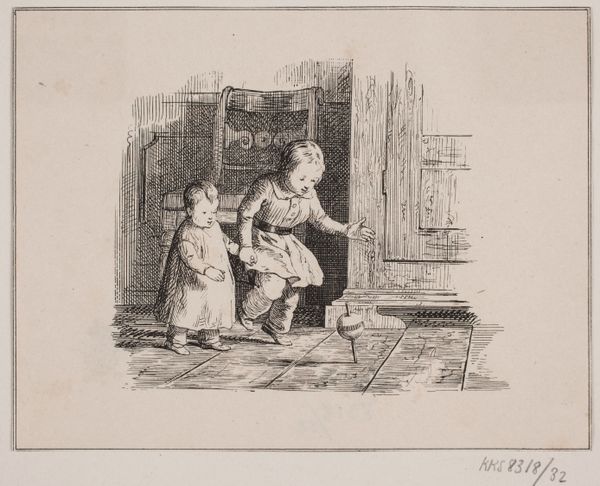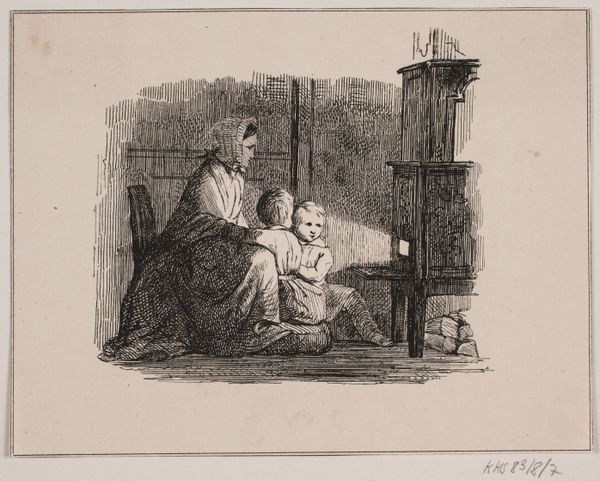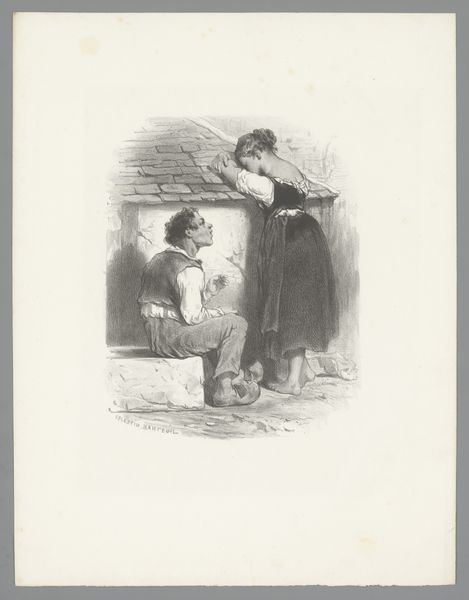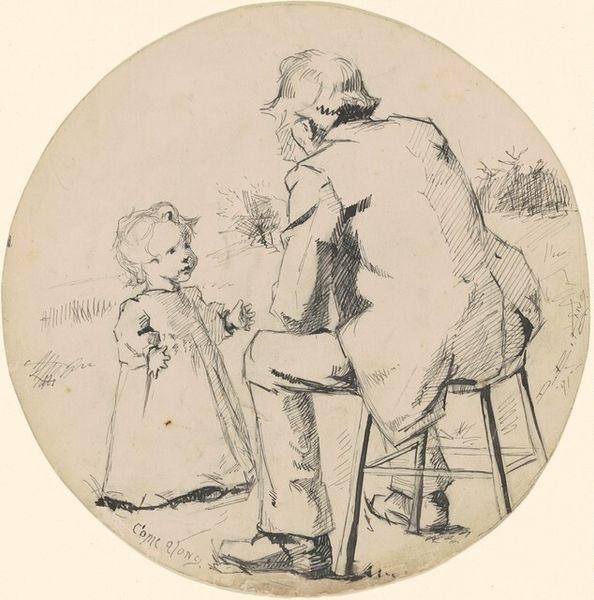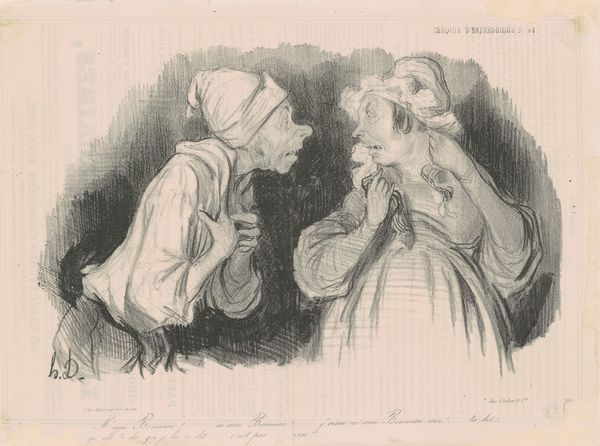
drawing, pencil
#
portrait
#
pencil drawn
#
drawing
#
pencil
#
genre-painting
Dimensions: 137 mm (height) x 148 mm (width) (bladmaal)
Curator: Immediately, I'm struck by its intimate scale and the delicacy of the line work. It feels so personal, almost like stumbling upon a private moment. Editor: This is "Giv mig et kys," or "Give Me a Kiss," a pencil drawing by Lorenz Frølich, created around 1861. We're lucky to have it here at the SMK, the National Gallery of Denmark. I'm especially interested in situating this tender image within its historical moment. Think about what childhood represented then, and who had the privilege to represent it. Curator: The artist captures something universal in the exchange between adult and child. Look at how the light catches the girl's upturned face. There is something truly tender at play here, don't you think? One sees glimpses of innocence in her facial features that elicit positive emotions. Editor: Of course, but consider the visual power dynamics embedded here. Frølich has depicted an interaction—a negotiation even—between generations. Note the raised finger. Is that just playful, or does it speak to expectations placed upon children? Does her dress, slightly askew, invite critique on childhood standards and parental expectations in that era? Curator: Ah, you always push us beyond the surface! Perhaps it's both. The raised finger is intriguing because it symbolizes discipline while maintaining an overall theme focused primarily on warmth. I read the interaction less as negotiation and more as gentle prompting, perhaps a lesson about affection or polite behaviour. Symbols associated with this kind of imagery would also invoke trust and innocence from this interaction. Editor: I can certainly appreciate that reading. Thinking about cultural memory, images of children, even staged ones, become powerful carriers of societal values. I see a reflection of Victorian ideals and expectations in how children were often positioned in art: symbols of purity but also subjects of instruction. I ask if her simple act, such as reaching to give a kiss, should only ever invoke only those sentiments. What of more contemporary contexts and reflections about how gender is constructed in those formative interactions? Curator: You provide valuable additional perspective! Understanding this period with that approach certainly enriches my own perspective, bringing a modern view on societal standards. Editor: Exactly! Engaging with this era by considering social and power dynamics allows one to form their own modern perception while considering the weight such innocent seeming images and scenarios contain in a historic setting.
Comments
No comments
Be the first to comment and join the conversation on the ultimate creative platform.
